
© Dave Morgan. (Click image for larger version)
www.ballet.org.uk
Gallery of pictures by Dave Morgan
Last year English National Ballet named Alison McWhinney and Junor Souza joint winners of its Emerging Dancer Competition – the first time since the in-house contest was launched in 2010 that two dancers walked away with the award. For 2015, however, we’re back to a single victor: Jinhao Zhang, a 2014 ENB School graduate and current member of the troupe’s corps (aka ‘artist of the company’).
I have to say I was surprised by the result – a quick survey of my neighbours in the audience confirmed I wasn’t the only one who assumed one of the female finalists would win, specifically Katja Khaniukova or Isabelle Brouwers – but the technical skill and big personality Zhang showed on Monday evening are certainly worthy of recognition, and I look forward to seeing whether this prize accelerates his advancement, either within ENB or elsewhere.
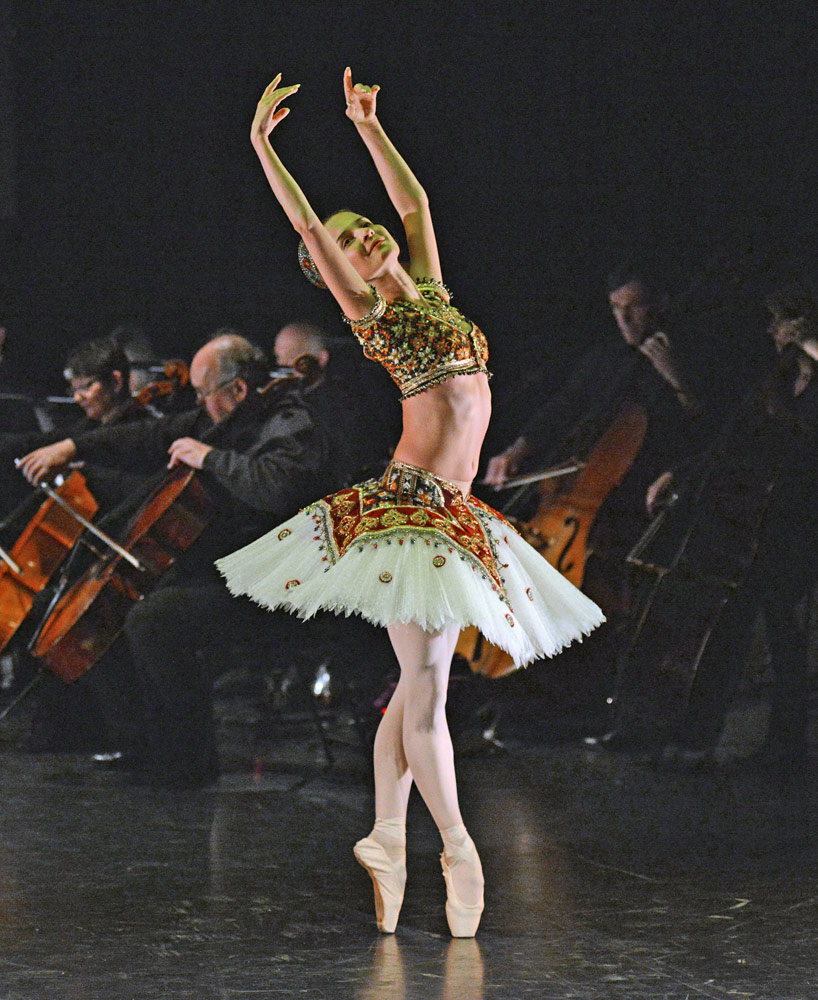
© Dave Morgan. (Click image for larger version)
The competition was established to recognise the talent among ENB’s junior ranks, and it’s become popular among ballet fans over the years. This year arabesques stretched and fouettés flew at Southbank Centre’s Queen Elizabeth Hall – a big change from last year’s Lyceum Theatre, which has twice the seating capacity. QEH proved a cosy venue, though the downsize wasn’t entirely ideal: the auditorium has no orchestra pit, and fitting both the dancers and ENB’s Philharmonic on the modest stage was a stretch, to say the least. Still, it was a cheery evening all the same, with a warm welcome from Natasha Kaplinsky and a great deal of audience goodwill.
Like ENB at large, the eight finalists for 2015 are a noticeably international bunch, representing Germany, America, Ukraine, Brazil, China and the UK between them. Five – Zhang, Brouwers, Anjuli Hudson, Jeanette Kakareka and Vitor Menezes – are artists of the company; the others – Khaniukova, Max Westwell and James Streeter (who unfortunately could not perform on Monday due to injury) – are junior soloists. On the judging panel were Royal Ballet alums Leanne Benjamin and Wayne Sleep, Michael Nunn and William Trevitt of BalletBoyz, Dutch choreographer Didy Veldman and and ENB artistic director Tamara Rojo.
Pas de deux
The show kicked off with four pas de deux. First up were Khaniukova and Ken Saruhashi (replacing Streeter as a non-competing partner) in the Pas d’esclave from Le Corsaire. Khaniukova already has experience dancing Gulnare for ENB, and the sunny role suits her well: she has a lovely smile and nimble feet, perfect for the extract’s complicated footwork and many pique turns. Her fouettés at the end were a real treat and drew enthusiastic applause, just as intended.
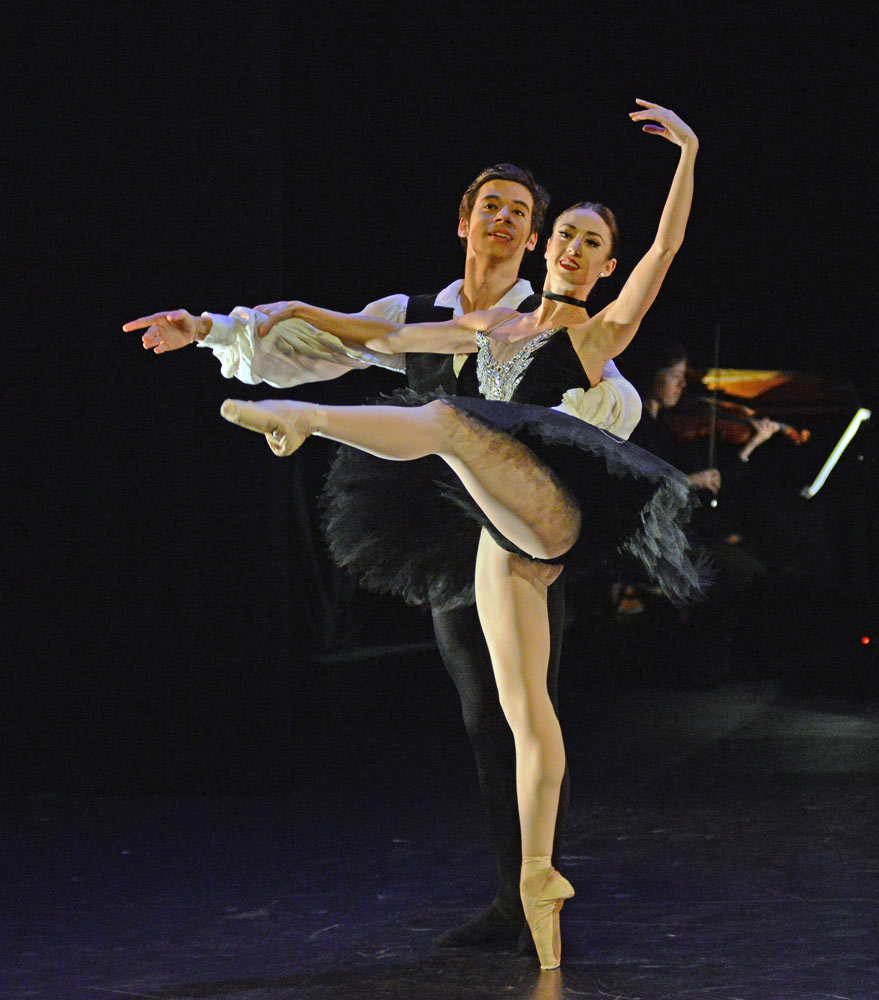
© Dave Morgan. (Click image for larger version)
Hudson and Menezes performed Satanella from Carnival in Venice capably enough, but neither dazzled. Hudson flashed a lovely coy smile, but her extensions didn’t feel fully drawn out, and Menezes was shaky on many of his turns (though not his grandes pirouettes, which were rock-steady). Kakareka and Westwall’s scarf dance from La Bayadère was similarly muted. An early misstep with the scarf flustered both dancers, resulting in visible nerves and wobbling limbs from each. To their credit, Westwall maintained a convincing face throughout, and Kakareka mustered some gorgeous lines (she has legs for days), but the piece fell off-kilter the moment they fumbled their central prop.
I thought of all the couples, Brouwers and Zhang demonstrated the most chemistry with their Don Quixote pas de deux. Brouwers was an adorable combination of sassy and charming, flourishing her fan cheekily, and she handled the fleet-footed choreography with a wonderful lightness. Zhang too showed a lot of personality, merrily grinning and offering some very impressive turns and barrel leaps. One of the biggest challenges of performing extracts like these is making the characters resonate out of context, sans scenery and narrative build-up – a feat both dancers managed to achieve here.

© Dave Morgan. (Click image for larger version)
Variations
Variations followed the duets, and most used theirs as a chance to show off their contemporary side. Khaniukova was the only ballerina who stayed en pointe and opted for the orchestra over recorded music, performing a solo called Continuance choreographed by Christopher Marney. I was moved by how fully she gave herself over to the mournful music, and thought she captured its tone beautifully with soft, waving arms and a wide-eyed expression of longing. I was less enamoured with the many lapses into pedestrian strides – a contrived and increasingly common trend in contemporary ballet – but all in all found her performance stirring, and a good example of the kind of modern work ENB seems to be moving towards.
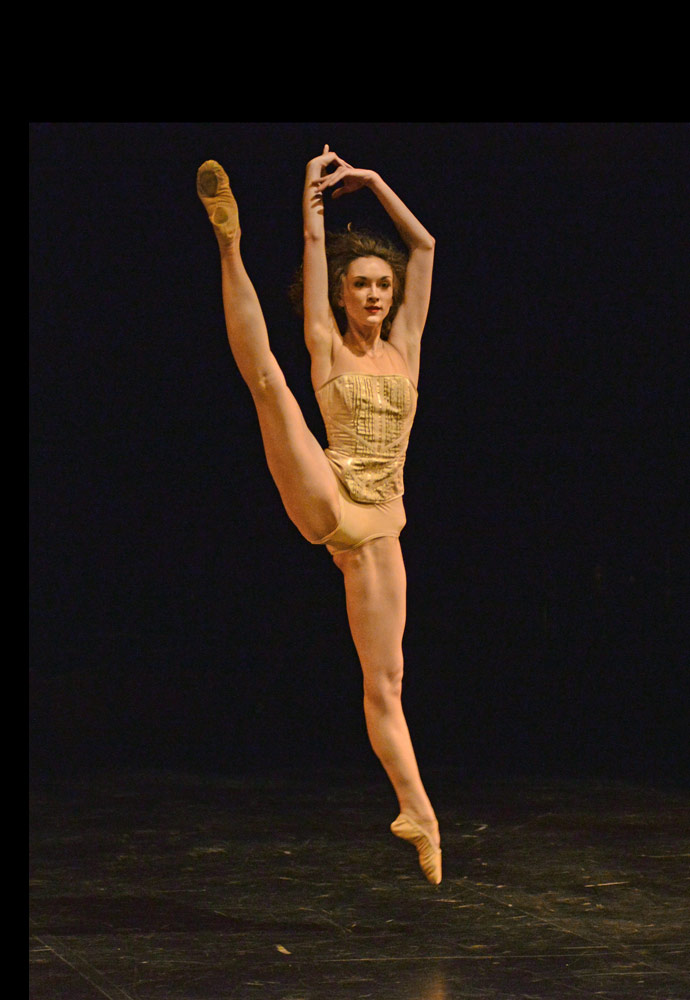
© Dave Morgan. (Click image for larger version)
Both Hudson and Kakareka went for very brief pieces, which felt like a bit of a missed opportunity seeing as both appeared much more comfortable here than in their earlier performances. Hudson’s (Insert Name by Tamarin Scott) involved some interesting floorwork, while Kakareka’s (Lost in Thought by Juanjo Arques) saw her bang out several lovely long extensions (much more steadily than in her previous appearance, I should note). Neither was as striking as Brouwers’ Brotsjor, a smouldering piece set to industrial music and choreographed by Northern Ballet’s Kenny Tindall. Brouwers demonstrated a lot of control, approaching the many flashy moves – splits, high-kicks – in a measured way that showed off her range without feeling overly tricksy. It was her self-possession here, coupled with the passionate way she spoke about dance in her introductory video, that had me convinced she’d be the competition winner.
As for the men, Menezes went full traditional with a solo from the Nutcracker, while Westwell performed an extract from Christopher Bruce’s modern Swansong and Zhang opted for a self-choreographed version of Dying Swan (no doubt winning brownie points from the judges for his self-styled efforts). Menezes achieved some decent height in his bouncy piece and left me with the impression that he’d be good to have on hand for any spare prince roles going. Without the weight of the full-length piece behind it, Westwell’s Swansong sliver was a little humdrum, though it did give him a chance to flex the emotional muscle that’s landed him roles in Romeo & Juliet and Manon in recent years – an opportunity that didn’t so readily present itself in his earlier piece.

© Dave Morgan. (Click image for larger version)
Zhang’s solo was dramatic and borderline gymnastic, swishing from one striking pose to another, tracing crisp lines that sit well with his slim physique. I found his rapid transitions clashed a little with the music and at times felt a little detached. I loved his take on wings, though – black feathered arms that don’t flutter so much as twitch – and thought his choice of work too showed a canny observance of the direction ENB is heading as a company.
And the Winner is…
Although the evening eventually narrowed down a few clear front runners – Khaniukova, Brouwers and Zhang from where I stood – choosing a winner couldn’t have been easy. More straightforward was the People’s Choice Award, which is open to ENB’s entire junior division and decided by the public. This year first soloist Lauretta Summerscales scooped this prize, her second time winning it.
…and congratulations to our 2015 People's Choice Award, Laurretta Summerscales #ENBEmerging pic.twitter.com/vJfMw6bdMk
— EnglishNationalBalle (@ENBallet) March 23, 2015
While the panel deliberated on the Emerging Dancer Award, last year’s recipients Alison McWhinney and Junor Souza treated us to an extract from from Liam Scarlett’s No Man’s Land, part of ENB’s 2014 commemorative WW1 bill Lest We Forget. The two nailed the complicated partner-work as they drew a moving portrait of a relationship shattered by the war, their interactions tender and their technique on point. The performance was a beautiful reminder of the young talent ENB has under its belt – talent I can’t wait to watch develop in the coming years.

© Dave Morgan. (Click image for larger version)











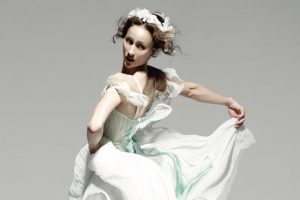
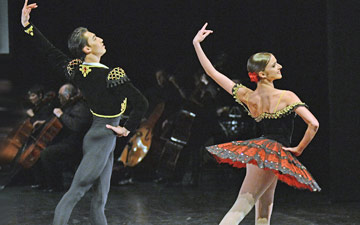

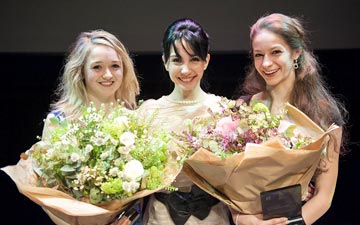
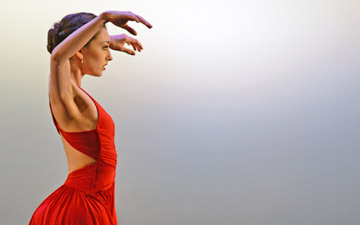
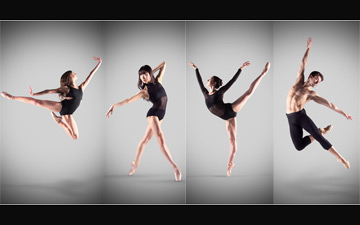
You must be logged in to post a comment.